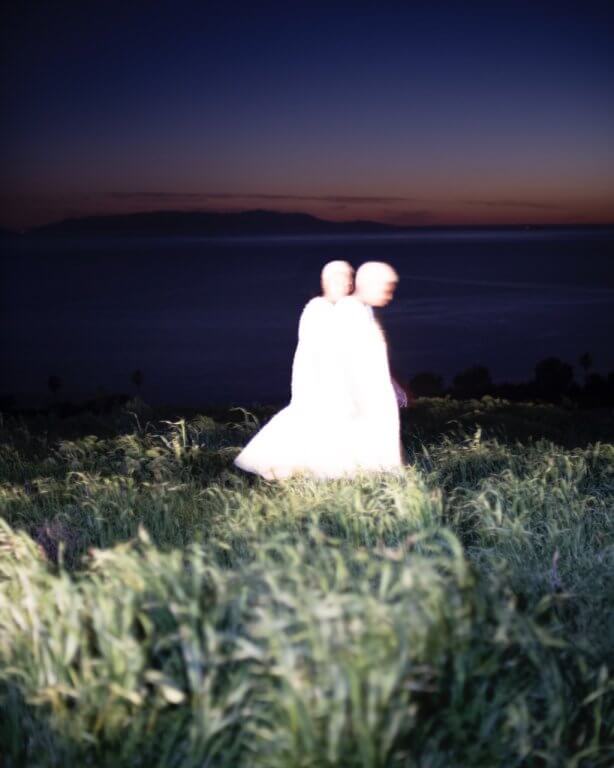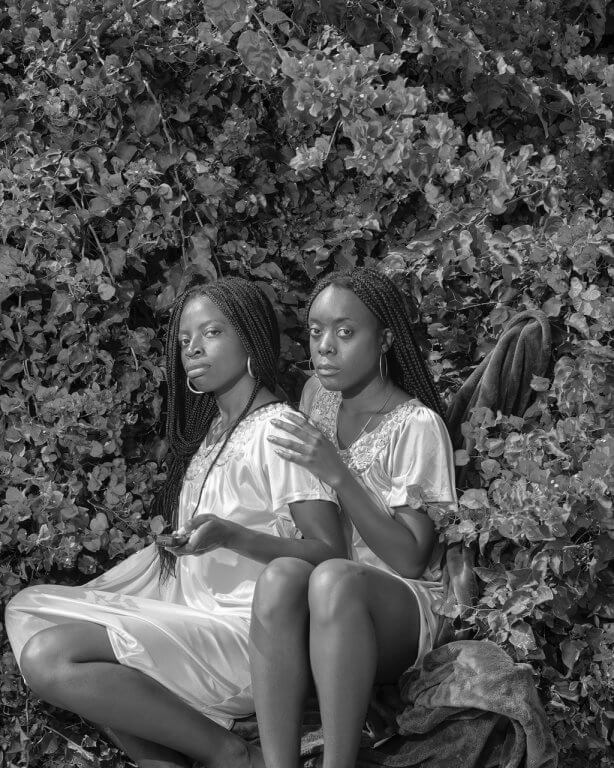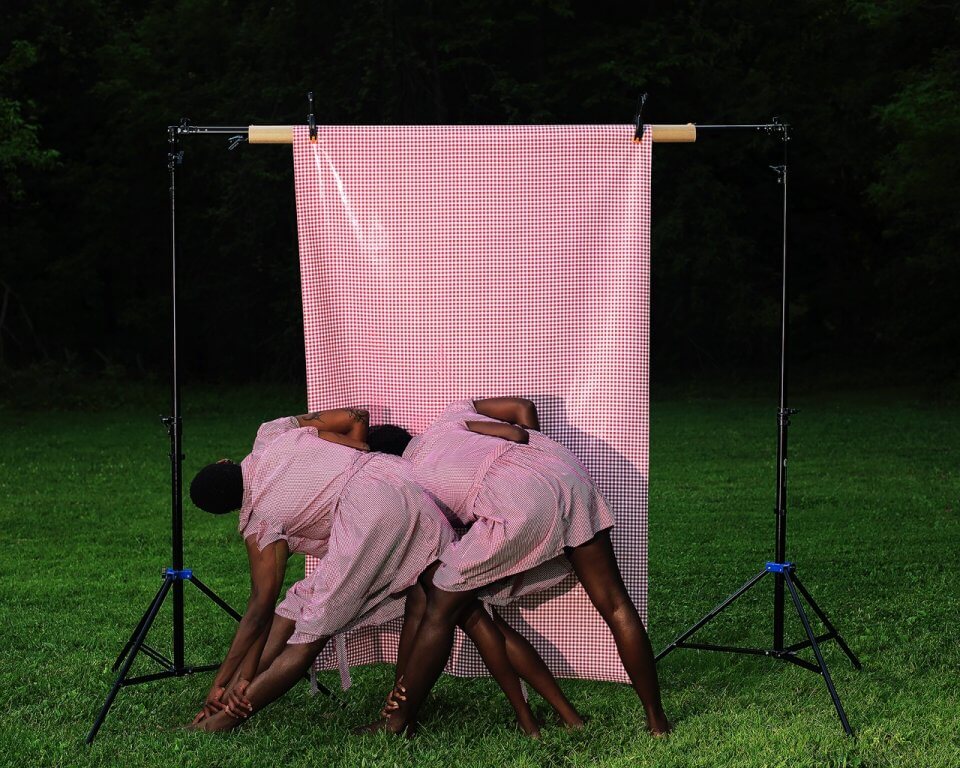In the summer of 2023 Huis Marseille will be showing Take This with You / Pran sa avèk ou, the first ever European exhibition of work by the Haitian born artist Widline Cadet. She uses her photographic practice to reflect on the nature of her diasporic experience, addressing ideas of kinship, intergenerational legacy, and the fragility of memory. Apparent opposites such as presence and absence, fact and fiction, or past and future recur in all shades and nuances.
Adding to the family archive
At the age of ten Widline Cadet left her native Haiti and migrated to New York, following her older siblings, who had left before her, one by one, to rejoin their mother. At that time Cadet had not lived with her mother in years. ‘Absence often drives the work,’ she says, looking back.
Despite coming into adulthood in America, Cadet kept her connections to Haiti and her family members living there and grew curious about her family history and the generations that preceded her. But of her maternal grandmother, for instance, not a single photograph exists. Her desire to add to the small family archive prompted Cadet to start photographing her family members, but her Master’s degree took her away from the family, limiting the time and access she had to them. She therefore started turning the camera on herself, examining her own inner self and how it had been influenced by her migration. Motifs in her pictures refer to her past, such as sprigs of the bougainvillea that grew around her parental house in Haiti, and gingham dresses modelled after her old school uniform.
Nevertheless, in her self-portraits she could just as easily be embodying someone else. ‘My grandmother, for instance, who passed away some thirty years before I was born, but is still very much a part of me through her connection with my mom. I think about this intergenerational way of knowing someone despite never meeting them.’ This is one of many instances of Cadet reimagining someone based on her mother’s recollections. In this speculative way – guessing at possible versions of each person – she draws figures of the past into the present and future.
Kinship between Black women
Initially Cadet focused on the women in her family, such as her mother and sisters, but she later expanded her subjects to include others. She asked friends and people she met on the street with whom she felt a natural affinity for permission to take their portrait. ‘There is a magic in this kind of chance encounter, and in the generous trust that people gave me in allowing themselves to be photographed,’ she says. In her photos she reimagines them as her sisters, family members she had never met, and sometimes as body doubles. ‘That was how strangers entered my work; not as strangers, but as people I imagined I already knew.’ The fact that all those portrayed are Black women is no coincidence: Cadet celebrates the natural kinship she feels with them, and resists the stereotypical representation of Black women.
References to the photographic process
Because Cadet often places women with a strong visual similarity close together, her works contain ‘body doubles’, and she occasionally emphasizes this effect through photo edits. For instance, the acute observer will notice that a composition of forward-bending girls contains rather a lot of limbs for just two people. The photographer uses this kind of intervention to encourage us to look actively and to doubt our own perception: are these ‘twins’ actually a kind of ‘cut-and-paste’ duo? Whether the doubles refer to two friends, two sisters, two iterations of the same person, or to a dual identity, Cadet leaves open.
Direct references to the photographic process serve as a reminder that the unedited images are also constructions. In one photo the camera standpoint is such that the frame holding the backdrop cloth is prominently included in the picture; in another, the photographer holds the camera’s shutter bulb in an almost provocatively visible way.
Take This with You / Pran sa avèk ou
In Huis Marseille, Cadet combines family archive photos with her own photographs of family, friends, herself, and previously unknown people. Together they form a single archive in which different generations and layers of time exist side by side. Approaching (her family) history through hypothesis creates an interesting dynamic between fact and fiction. Cadet brings both together in a genuine istwa, a Kreyòl word meaning ‘(hi)story’.
Take This with You / Pran sa avèk ou is Cadet’s first exhibition in Europe. Like many of the signifiers in Cadet’s photographs, the title refers to a multitude of things. As a child, the phrase occurred to her while she was preparing to move from Haiti to the United States; as an adult, it reminds her what to bring when travelling between the two countries. The words also point to photography’s ability to flatten three-dimensional objects and turn them into something you can keep in your pocket. In times of loss they can therefore forge a link between people who are widely separated in space or in time.
Widline Cadet (1992, Pétion-Ville, Haiti) started studying analogue photography at secondary school. During her Bachelor’s degree (at the City College of New York) and her Master’s (at Syracuse University) she continued to specialise in photography. Cadet lives and works in the United States.
Cadet’s work has been acquired by a variety of public and private collections, including at the Museum of Contemporary Photography (Chicago), the Los Angeles County Museum of Art, the Whitney Museum of American Art (New York), the Pérez Art Museum Miami, the Milwaukee Art Museum, and the Princeton University Art Museum. Her work has been featured in numerous publications including Aperture Magazine, Foam Magazine, The New Yorker, TIME Magazine and The New York Times Magazine. She is a recipient of a Mortimer-Hays Brandeis Traveling Fellowship (2013), a Skowhegan School of Painting and Sculpture artist in residence (2018), a Lighthouse Works fellow (2019), a Syracuse University VPA Turner artist in residence (2019), the Museum of Contemporary Photography’s Snider Prize (2020), a Lit List nominee (2020), a NYFA / JGS Fellowship in photography (2020), and a Studio Museum in Harlem artist in residence (2020-2021).









